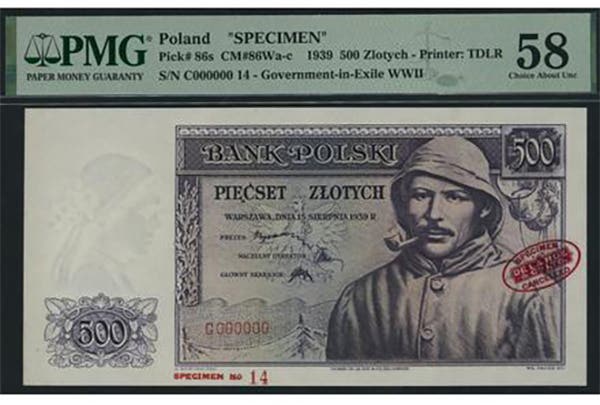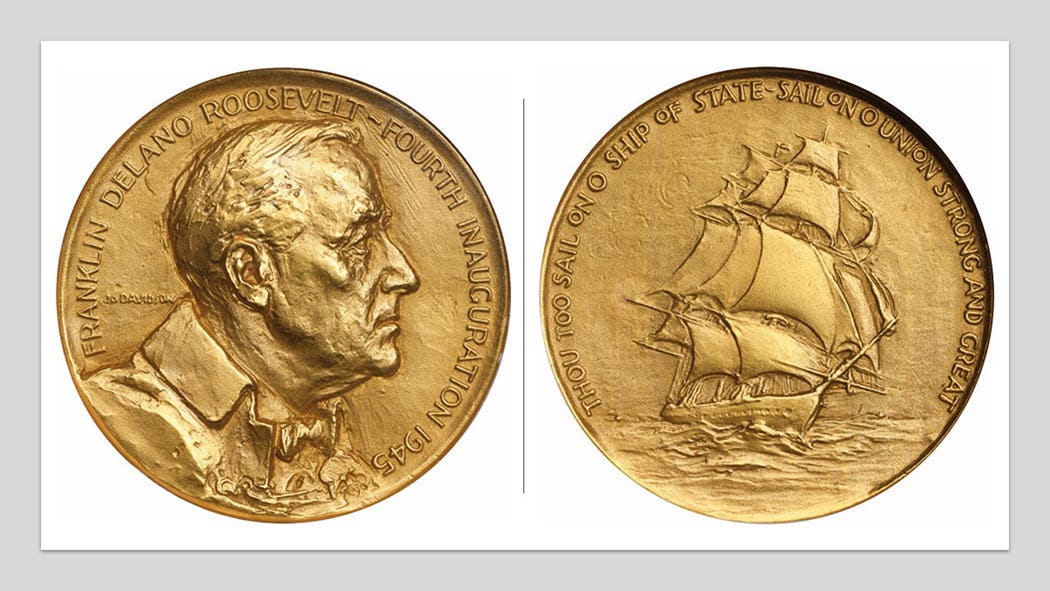An Overview of the American Women Quarters Program
The U.S. Mint’s American Women Quarters Program, running from 2022 through 2025, celebrates the trailblazing contributions of women across all fields with a series of commemorative coins backed by historic legislation.
This article focuses on the U.S. Mint's "American Women Quarters Program," which was specifically conceived to honor the achievements of American women in all fields. The program was authorized by Public Law 116-330, jointly enacted on January 13, 2021, by the Senate and House of Representatives of the United States of America. It is a four-year coinage program from 2022 until the end of this year.
Interestingly, while Law 116-330 authorized the coinage of commemorative quarter and half dollars, only the first was produced. Five quarter coins are made yearly, the maximum permitted by the legal norm. They all bear an identical obverse displaying George Washington's portrait created by Lauren Gardin Fraser (1889-1966), whose initials are visible at the base of the bust. Laura's design was initially sculpted as a proposal for the 1932 quarter that honored the bicentennial of George Washington's birth. It was ultimately rejected by the then-U.S. Treasury Secretary Mellon, who chose the familiar Jon Flannigan design.
However, the five different reverses, each depicting one celebrated woman, have been produced yearly, and curating this selection has not been easy. After consultation with the Smithsonian Institution's American Women's History Initiative, the National Women's History Museum, and the Congressional Bipartisan Women's Caucus, the U.S. Mint has been making formal concept recommendations for the women who appear in the program. Citizens have also submitted recommendations for potential honorees, and the Citizens Coinage Advisory Committee has also been consulted. The Director of the Mint then submitted the formal concept recommendations to the Secretary of the Treasury for approval, after which the actual design and coinage began.
The final coins have been produced in two varieties: a circulating coin made in copper-nickel clad copper (5.67 g, 24.26 mm) and a non-circulating specimen produced in 0.999 silver (6.34 g; 24.26 mm). Further varieties arise from the fact that the coins are indistinctively produced at the U.S. mints of Denver, Philadelphia, and San Francisco, in which respective mintmarks appear engraved below the year on the obverse ("D," "P" or "S," respectively). However, those produced in silver have only been struck at the San Francisco mint.
2022 Series
The 2022 series portrayed the likeness of Anna May Wong, Nina Otero-Warren, Wilma Mankiller, Sally Ride, and Maya Angelou.
Wong Liu Tsong (1905-1961), known professionally as Anna May Wong, was born in Los Angeles, California, and is considered the first Chinese American film star in Hollywood and the first to gain international recognition. The reverse displaying her portrait was designed by Emily S. Damstra and engraved by John McGraw.
Maria Adelina Isabel Emilia "Nina" Otero-Warren (1881-1965) was an American suffragist, educator, and politician. She was the first Hispanic woman to run for Congress; she unsuccessfully campaigned as the Republican nominee to represent New Mexico in the House of Representatives in 1922. She became the first female superintendent of Santa Fe public schools. The corresponding reverse of her coin was designed by Chris Costello and engraved by Craig Campbell.
Wilma Pearl Mankiller (1945-2010) was a Native American activist who became the first woman elected as the Principal Chief of the Cherokee Nation. Interestingly, the coin's reverse contains an expression written in Cherokee syllabary, meaning "Cherokee Nation." The reverse was designed by Benjamin Sowards and engraved by Phebe Hemphill.
Sally Kristen Ride (1951-2012) was an American astronaut and physicist. In 1983, she became the first American woman and the third woman to fly in space. The coin's reverse was designed by Elana Hagler and engraved by Phebe Hemphill. Inspired by her quote, "...When I wasn't working, I was usually at a window looking down at Earth," it depicts the astronaut next to a window on the space shuttle.
Marguerite Annie Johnson (1928-2014), known as Maya Angelou, was a celebrated American poet and civil rights activist. The reverse of the coin, depicting her with her arms uplifted, was designed by Emily S. Damstra and engraved by Craig Campbell.
2023 Series
Bessie Coleman, Edith Kanaka'ole, Eleanor Roosevelt, Jovita Idar, and Maria Tallchief were selected to appear in the respective reverses of the 2023 series.
Elizabeth (Bessie) Coleman (1892-1926), popularly known as "Queen Bess" or "Brave Bessie," was the first African American woman and first Native American to hold a pilot license. She was also the earliest known Black person to earn an international pilot license. The coin reverse bears the date 15 June 1921, when she received said license. The reverse was designed by Chris Costello and engraved by Eric David Custer.
Edith Kanaka'ole (1913-1979) was a Hawaiian dancer, chanter, and teacher. Her stories and compositions have served to preserve aspects of Hawaiian history, customs, and traditions. Inscribed on the coin is "E hō mai ka ʻike," which in Hawaiian means "granting the wisdom" and refers to the intertwined role hula and chants play in cultural preservation. Emily S. Damstra made the design, and Renata Gordon produced the engraving.
Anna Eleanor Roosevelt (1884-1962) was an American political figure, diplomat, and activist. She gained international recognition for her leading role in designing the text and supporting the Universal Declaration of Human Rights. Don Everhart and Craig Campbell produced the design and engraving of the coin's reverse.
Jovita Idar Vivero (1885-1946) was an American journalist, teacher, and civil rights worker focused on Mexican Americans and immigrants. Designed and engraved by John McGraw, the coin's reverse portrays Jovita wearing a robe displaying, among other things, the names of several newspapers in which her articles were published. All the legends appearing on the reverse have been stamped on Jovita's robe.
Elizabeth Marie Tall Chief (1925-2013), also known as Maria Tallchief, became America's first prima ballerina and the first Osage Tribe member to hold the rank. She is believed to have revolutionized American ballet. Her Osage name, "Two Standards," was engraved on the reverse of the corresponding coin using Osage orthography. The reverse was designed by Benjamin Sowards and engraved by Joseph Menna.
2024 Series
The 2024 series was devoted to Pauli Murray, Patsy Takemoto Mink, Mary Edwards Walker, Celia Cruz, and Zitkala-Ša.
Anna Pauline (Pauli) Murray (1910-1985) was an American civil rights activist, advocate, and Episcopal priest who led the fight against racial and sexual discrimination. The word "HOPE" on the coin's reverse refers to Murray's belief that significant societal reforms were possible when rooted in hope. Emily S. Damstra and Joseph Menna, respectively, designed and engraved the reverse of the coin.
Patsy Takemoto Mink (1927-2002) was an American attorney and politician from the U.S. State of Hawaii. She served 24 years in the United States House of Representatives between 1965 and 2002, becoming the first woman of color and Asian American woman elected to Congress. She is known for her work on legislation to advance women's rights and education. She is depicted on the coin's reverse holding her landmark "Title IX" legislation and wearing the traditional Hawaiian lei. Beth Zaikin designed the coin's reverse, and John McGraw engraved it.
Mary Edwards Walker (1832-1919) was an American abolitionist and surgeon. She was made a prisoner of war during the American Civil War and is the only woman to receive the Medal of Honour, the highest military decoration granted by the U.S. Armed Forces. The medal is next to Mary's portrait on the coin's reverse. Phebe Hemphill designed and engraved this side of the coin.
Celia Caridad Cruz Alfonso (1925-2003), known as Celia Cruz, was a Cuban American singer and one of the most popular Latin artists of the 20th century. Internationally known as the "Queen of Salsa," she sold over 10 million records and is one of the best-selling Latin music artists. The singer is represented on the coin's reverse with her popular phrase "AZÚCAR." Again, Phebe Hemphill carried out the design and engraving.
Zitkala-Ša (1876-1938), whose name means "Red Bird" in Lakota, was a Yankton Dakota writer, translator, musician, educator, and political activist. She was also co-founder and president of the National Council of American Indians, which fought for Native people's rights. Zitkala-Ša is depicted wearing a traditional dress on the reverse of the coin, which was designed by Don Everhart and engraved by Renata Gordon.
2025 Series
The last series of the program is being gradually released throughout 2025. The honorees are Ida B. Wells, Juliette Gordon Low, Vera Rubin, Stacey Park Milbern, and Althea Gibson. The first coins of the 2025 series (i.e., those depicting Ida B. Wells on the reverse) were released on the first days of February. The release of the last coins of the series, depicting Althea Johnson, is scheduled for Fall 2025.
Ida Bell Wells-Barnett (1862-1931) was an American investigative journalist, sociologist, and early civil rights movement leader. She was one of the founders of the National Association for the Advancement of Coloured People. The coin's reverse, depicting her portrait, was designed by Elana Hagler and engraved by Phebe Hemphill.
Juliette Gordon Low (1860-1927) founded the Girl Scouts of the USA. The coin's reverse depicts her likeness next to the original Girl Scout trefoil she designed and patented. Tom Hipschen and Eric David Custer, respectively, designed and engraved this side of the coin.
Vera Florence Cooper Rubin (1928-2016) was an American astronomer who pioneered work on galaxy rotation rates. The Vera C. Rubin Observatory in Chile is named in her honor. Her profile, surrounded by a spiral galaxy and other celestial bodies, was designed by Christina Hess and engraved by John McGraw on the coin reverse.
Stacey Park Milbern (1987-2020) was a Korean American disability justice activist who advocated for the fair treatment of disabled people. On the coin's reverse, she is portrayed speaking to an audience. Elana Hagler produced the design, while Craig Campbell engraved it.
Althea Neale Gibson (1927-2003) was an American tennis player and professional golfer. In 1956, she became the first African American to win a Grand Slam at the French Open. She won 11 Grand Slam titles and held the top tennis world ranking in 1957. She is regarded as the first Black athlete to break the color barrier at the highest level in tennis. The corresponding coin reverse features Althea with a racket in one hand and a ball in the other while standing confidently by a net on a tennis court. Don Everhart and Renata Gordon, respectively, took care of the design and engraving.
You may also like:








